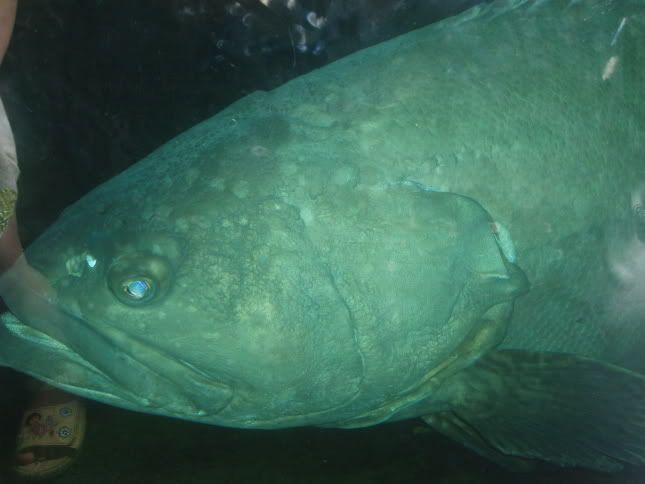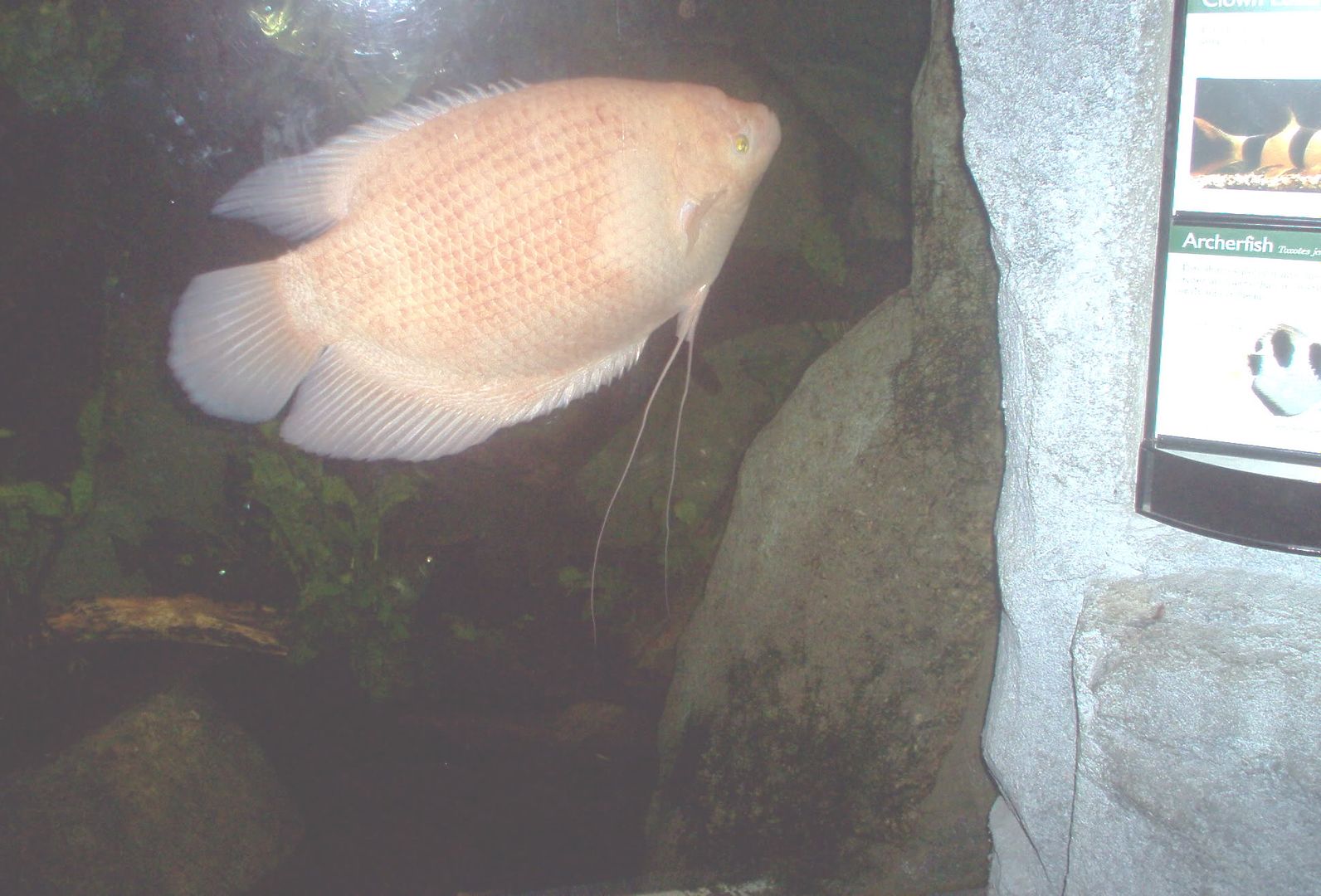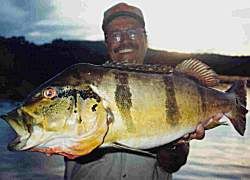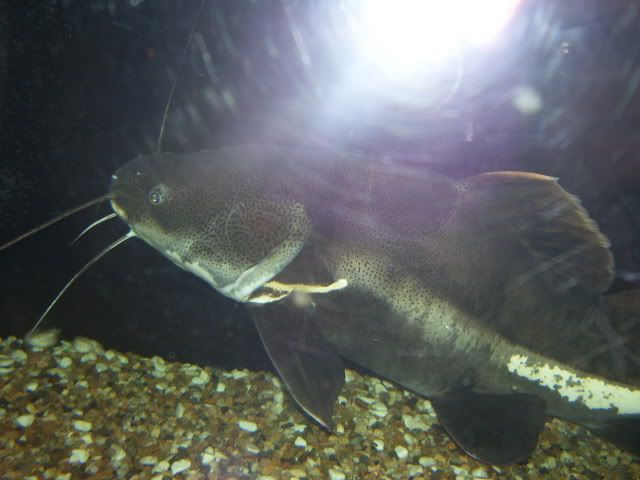A large fish simply cannot live in a small river without sufficient depth to contain its bulk. A fish that is exposed in this way for long soon becomes prey for some other creature. That is not to say that such fish cannot pass through shallow sections of their river (or other body of water) though the normal practice would be to wait for the wet season or, at least, some heavy rain. Even a bit of cloudiness to the water can help the fish to hide.
Probably the biggest factor that determines the size of fish that a river can hold though is the food supply. Big fish have big appetites and need an ever increasing quantity of food to maintain and even increase their bulk. A given volume of water can only produce so much food.
Of course, not all bodies of water are able to produce the same supply for a given volume of water. Rocky mountain streams provide very little in comparison to lowland swamps. The fast flowing water and lack of anchorage means that few plants can take hold and, because of this, there is little food up through the food chain. Mountain streams are also colder places and that affects growth rates too.
Many species adopt a more predatory diet as they become larger simply because the value of this food supply is more in line with their needs. The Taimen of Mongolia is the world's largest Salmonid species. When young they live mostly on insects but as they get bigger (and they regularly get to be more than one metre long) they turn to a predatory diet consisting of fish, rodents, amphibians and even birds.
An alternative to the predatory diet is the scavenger's diet. Many big fish around the world get to be the size they are because their particular habitat has a plentiful supply of some form of waste. The Goonch of India have become infamous after reports that they have been feeding on the remains of cremations from riverside Ghats. Goonch are a kind of catfish and are bottom feeders so it is likely that they would find any decomposing flesh in their territory whatever the source. We needn't take the choice personally. This is hardly the same as a rogue man-eating tiger.
Food supply is also affected by competition. One big fish in a section of river has the whole food chain to choose from. Two only have half as much. That's a big drop and good reason for a fish to become territorial.
One major exception to the rule developed so far for resident fish is the migration of certain species (notably Salmon). Salmon, and the natural form of Rainbow Trout often known as Steelheads, head out to sea in their youth and return upriver to spawn. In the sea they have a much increased food supply and become the sort of Big Fish that anglers dream of. Alaska and the Kamchatka Peninsula of the Russian Federation are hotspots for such migrations, and attract ever-increasing numbers of anglers from around the world.
Big Rivers do not necessarily mean Big Fish but certainly do provide the best starting point when trying to locate record specimens.
Now, thanks to tools like Google Earth, we can all fly over the earth and look for exciting possibilities. It still helps to have local contacts to confirm the actual situation, and to assist with arrangements and any necessary permissions. Now there's a hobby for the days when real fishing is not an option.
Ian has lived and travelled extensively in Asia over the last seven years. He has been a passionate fisherman from school-days and is now combining the two fields by offering exciting and affordable fishing holidays abroad for individuals and groups.
All the support you need to catch Big Fish in Wild Places
All the support you need to catch Big Fish in Wild Places
Article Source: http://EzineArticles.com/?expert=Ian_Ford
See my previous post: Catfish and Predator Fishing Tackle - Some Tips For Anglers 














{ 0 comments... read them below or add one }
Post a Comment